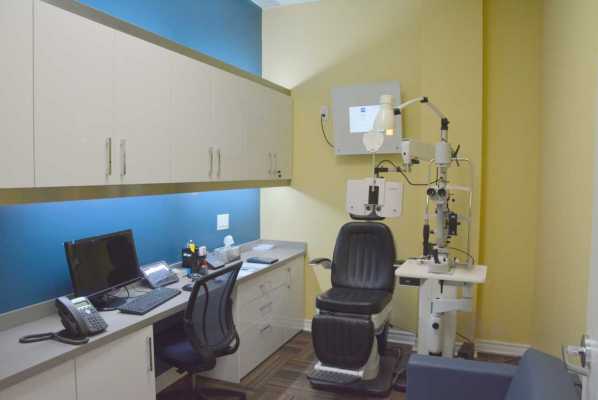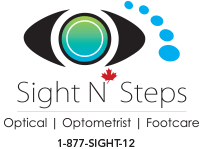Sight N' Steps Blog
- Font size: Larger Smaller
- Subscribe to this entry
- Bookmark

Stereopsis (Depth Perception) Test
Stereopsis is the term used to describe eye teaming that enables normal depth perception and appreciation of the 3-dimensional nature of objects.
In one commonly used stereopsis test, you wear a pair of "3D" glasses and look at a booklet of test patterns. Each pattern has four small circles, and your task is to point out which circle in each pattern looks closer to you than the other three circles. If you can correctly identify the "closer" circle in each pattern, you likely have excellent eye teaming skills that should enable you to experience normal depth perception.
Retinoscopy
Your eye doctor may perform this test early in the eye exam to obtain an approximation of your eyeglass prescription.
In retinoscopy, the room lights will be dimmed and you will be asked to focus on a large target (usually the big "E" on the eye chart). As you stare at the "E," your eye doctor will shine a light at your eye and flip lenses in a machine in front of your eyes. This test estimates which lens powers will best correct your distance vision.
Based on the way the light reflects from your eye, your doctor is able to "ballpark" your prescription — sometimes right on the money!
This test is especially useful for children and patients who are unable to accurately answer the doctor's questions.
Refraction
This is the test that your eye doctor uses to determine your exact eyeglass prescription.
During a refraction, the doctor puts the instrument called a phoropter in front of your eyes and shows you a series of lens choices. He or she will then ask you which of the two lenses in each choice looks clearer.
Based on your answers, your eye doctor will continue to fine-tune the lens power until reaching a final eyeglass prescription.
The refraction determines your level of hyperopia (farsightedness), myopia (nearsightedness), astigmatism and presbyopia.
Autorefractors And Aberrometers
Your eye doctor also may use an autorefractor or aberrometer to automatically estimate your eyeglass prescription. With both devices, a chin rest stabilizes your head while you look into the instrument at a pinpoint of light or a detailed image.
An autorefractor, like a manual refraction, determines the lens power required to accurately focus light on your retina. Autorefractors are especially helpful for determining an eyeglass prescription for young children and other patients who may have trouble sitting still, paying attention and providing feedback that the eye doctor needs to perform an accurate manual refraction.
Studies have shown that modern autorefractors are very accurate. They also save time. The autorefraction takes only a few seconds, and the results obtained from the automated test greatly reduce the time required for your eye doctor to perform a manual refraction and determine your eyeglass prescription.
An aberrometer uses advanced wavefront technology to detect even obscure vision errors based on the way light travels through your eye. Aberrometers primarily are used for custom or wavefront LASIKvision correction procedures, but many eye doctors are now incorporating this advanced technology into their routine eye exams as well.
Book Your Appointment Today at https://sightnsteps.ca/index.php/appointment
Or Better Yet Call Us 1-877-SIGHT-12 (1-877-744-4812)
- Sight N' Steps Optometrists Pickering - So What Do...
- Sight N' Steps Optometrists Pickering - So What Do...
- OGA (Made in France) - Sight N' Steps Jan 28
- Experience The Difference - At First Sight! - Sight N' Steps Mar 26
- So How Do I Make Appointment At Sight N' Steps? - Sight N' Steps Jul 04
- Why Must Eyeglasses Be Dispensed By A Licensed Optician? - Sight N' Steps Aug 29
- This Reminds Me of My Grand Ma'.....Look Again!!! - Sight N' Steps Nov 09



